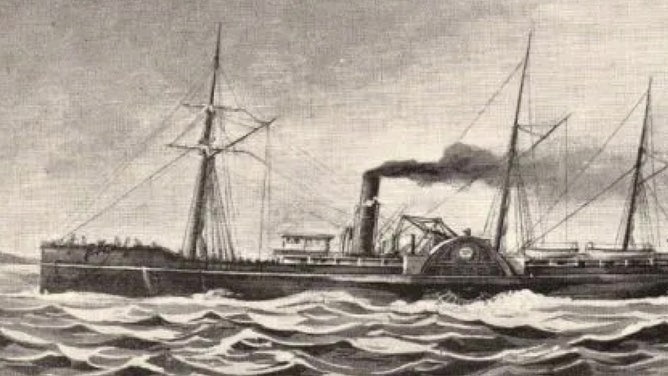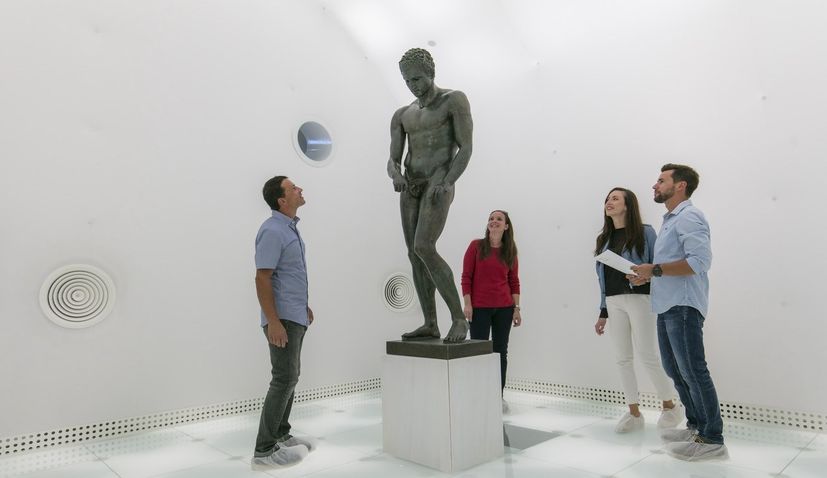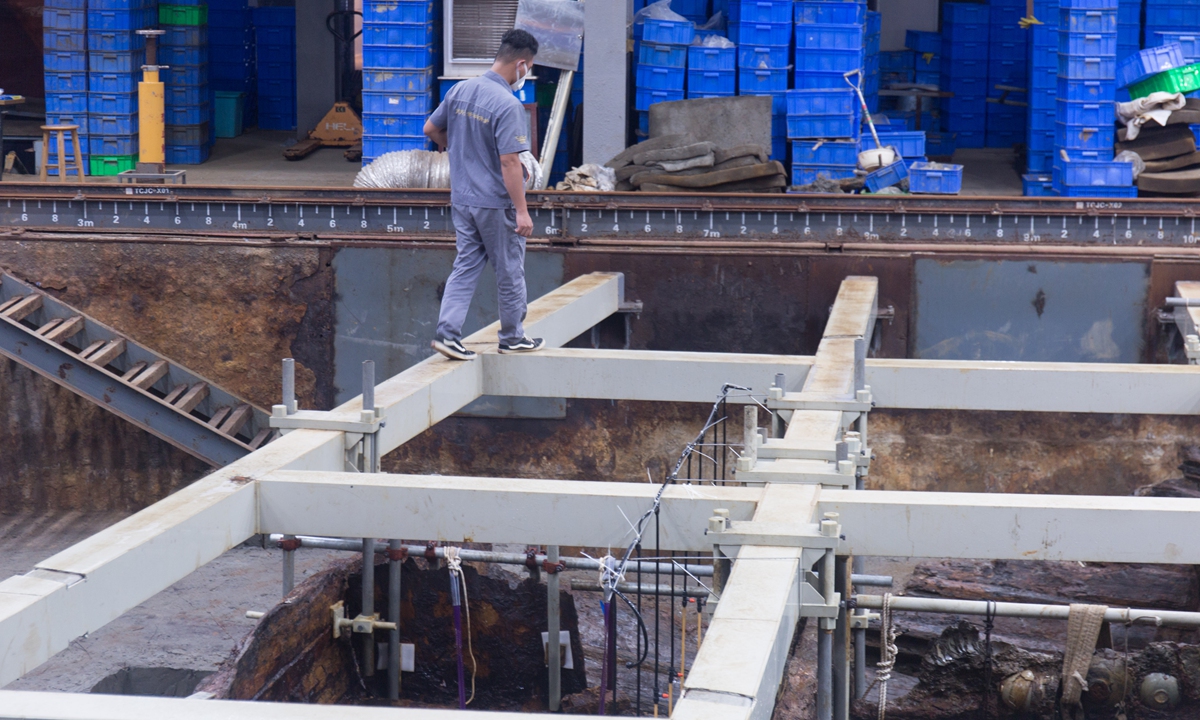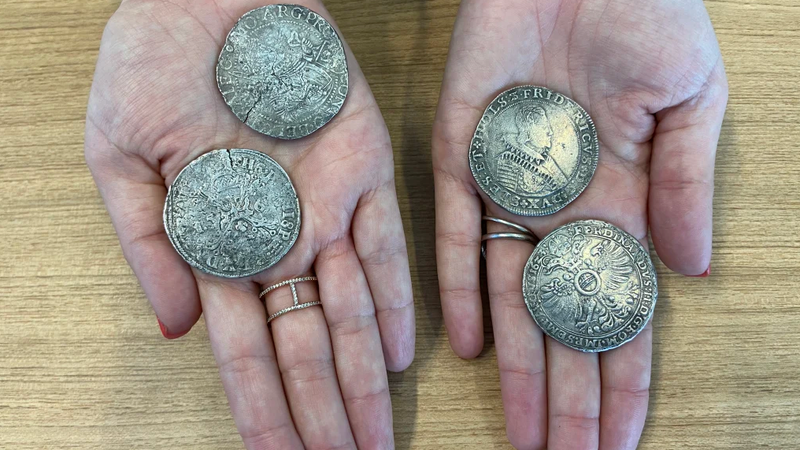HOT NEWS !
Stay informed on the old and most recent significant or spectacular
nautical news and shipwreck discoveries

-
The shipwreck of the SS Pacific off Washington coast
- On 16/12/2022
- In Treasure Hunting / Recoveries
- 0 comments

By Matthew Smith - Fox News
The crash and subsequent sinking of the S.S. Pacific in November 1875 predates Washington’s statehood. The crash – one of, if not the deadliest disaster off the Pacific Northwest coast – claimed more than 300 lives.
Miraculously, two people survived the wreck. Those survivors beat incredible odds. According to records, they clung to wreckage for more than a day before they were rescued. The lifeboats that were on the ship were inoperable; they had been filled with water to balance the ship, which used large paddle wheels powered by the steam engine.
Henry F. Jelly, one of the survivors, told the Daily British Colonist he was lying in bed when another ship collided with the Pacific. He recalled a terrifying tale of chaos as the ship was sinking with no one behind the ship’s wheel – passengers were crying, including a woman whose child had been killed during the panic of passengers trying to get off the ship.
While the overall death toll makes the Pacific’s sinking historical, its importance extends beyond the numbers.
The Pacific had left Olympia early in the morning of Nov. 4, made a number of stops and picked up several prominent and wealthy passengers.
There has long been belief that gold was aboard, giving the passengers – and those passengers’ connection to the Cassiar gold rush – a gold rush that led to more than a million dollars’ worth of gold coming out of the region in the 1870s, a part of history that’s often forgotten.
-
Pair of Levi’s jeans salvaged from an 1857 shipwreck
- On 16/12/2022
- In Auction News
- 0 comments

From Vittoria Benzine - Artnet News
Vintage bank notes, gold nuggets, and jewelry were among 550 treasures from the 1857 S.S. Central America shipwreck that went to auction with Holabird Western Americana Collections in Reno this month.Final prices across their multi-million-dollar sale ranged from $48 for a collection of books about treasure (estimated $80–$100) to $1,080,000 for gold from the vessel’s treasure box (estimated $1,800,000–$2,500,00).
However, a salvaged pair of miner’s pants from Mexican-American war veteran, merchant, and possible gold rusher John Dement stole the show, pulling in a total of $114,000—more than double their $50,000 estimate.
Holabird said the trousers could be the earliest known example of Levi Strauss craftsmanship. Gold from the S.S. Central America has appeared at auction before, but this is the first time its artifacts have been sold.
The 280-foot S.S. Central America had made 43 successful trips by September 1857, when it departed Panama for New York City carrying 477 passengers, 101 crew members, and 30,000 pounds of precious metal from the California gold rush.
After one stop in Havana, a hurricane shredded its sails and flooded its decks. Only 153 people survived. Marine engineer Tommy Thompson raised $12.5 million from 161 private investors to fund the expedition, which first surfaced coins from its wreck off the Carolina coast in 1988.
Thompson was prosecuted in 2005 for shorting investors of their shares. The thousands of gold bars, coins, and relics he unearthed were only five percent of the loot.
-
Search for priceless statues in the Adriatic Sea
- On 17/10/2022
- In Underwater Archeology
- 0 comments

From Croatia Week
American mega-builder Fred Hagen there is no such thing as an uneventful day. After all, he is running some 60 multi-million dollar building projects from Philadelphia to Fairbanks, Alaska … including new hospitals, government facilities, major museums and sprawling housing developments.
But for Hagen his most stimulating days have him diving on the wreck of the Titanic, salvaging World War ll aircraft and recovering mortal remains of American airmen lost in the jungles of Papau New Guinea, or starting his own humanitarian mission in war ravaged Ukraine — personally delivering pediatric medical equipment to embattled Ukrainian hospitals.
For Hagen, the quest for first hand knowledge and unexpected experiences is a marvelous obsession, especially for a humble Delco guy who started out swinging a hammer and working on the Alaskan Oil Pipeline in the late 1970s.
In the next few weeks Hagen and a select team of experts, including Croatian underwater archeologist, Irena Radić Rossi, and fellow underwater archeologist, Bridget Buxton, will embark on a search for a series of priceless bronze statues lost thousands of years ago in the Adriatic Sea during the reign of Roman Emperor Trajan 98 BC to 117 AD.
The expedition is based on the widely held theory developed since the discovery of the famed Croatian Apoxymonos statue in 1962 by a sponge diver who came across a Roman wreck, that there were likely more statues along the wreck site path as the the ship’s crew was tossing the heavy statues overboard in hopes of saving themselves.
In 1962, while diving for sponges, a man discovered an untouched ancient Roman cargo shipwreck in the deep channel just off the coast of modern-day Croatia. The site from Emperor Trajan’s time (98 to 117AD) has fascinated archaeologists for years and yielded many valuable discoveries. The site has also left archaeologists split on a theory of why the ship sank. 37 years later, the Croatian Apoxyomenos statue was found just 3 miles from the Roman cargo shipwreck. Could this be a clue to what sank the cargo ship ?
Many archeologists hypothesize the statue sailed with General Lucius Licinius Sura on the vessel and was cast overboard to lighten the load during a storm. Because Roman cargo ships rarely sailed with only one statue, it is believed that additional sculptures and items rest on the 3-mile stretch of ocean floor between the two sites. It is also thought that this may be the site of General Lucius Licinius Sura death.
-
Never before seen footage of the Titanic
- On 10/09/2022
- In Famous Wrecks
- 0 comments
By Phillip Nieto - Yahoo News
Never-before-seen footage of the legendary RMS Titanic showed the wreckage in the highest available 8k resolution.OceanGate, a commercial expedition group, took the footage this year and released a one-minute clip of the 8,000 resolution of the sunken British passenger liner.
The 110-year-old ship was found approximately 400 nautical miles from Newfoundland, Canada, and 2.4 below the surface of the Atlantic Ocean. The group charges each guest $250,000 to take a tour of the wreckage via a submersible. Previously, OceanGate has completed two expeditions, with a third one scheduled for 2023.
The footage provided by the team is the highest quality video ever taken of the world's most popular sunken vessel. "The amazing detail in the 8k footage will help our team of scientists and maritime archeologists characterize the decay of the Titanic more precisely as we capture new footage in 2023 and beyond.
Capturing this 8K footage will allow us to zoom in and still have 4K quality which is key for large screen and immersive video projects. Even more remarkable are the phenomenal colors in this footage," said Stockton Rush, president of OceanGate Expeditions, in a statement.
The company claims that each expedition is accompanied by a crew of historians, scientists, and dive experts. The footage shows the ship's bow, portside anchor, hull number one, a 200-pound anchor chain, cargo hold, and bronze capstan. Vivid images of the Titanic's decaying railings can also be seen.
The group hopes to use their footage to determine the ship's decay rate and assist archeologists in studying the wreckage.
-
Long lost sunken treasure returns to Indonesia
- On 10/09/2022
- In Illegal Recoveries
- 0 comments

From Australian Government
Hundreds of ceramics illegally removed from a historic shipwreck have been returned to Indonesia.333 ceramics from the Tek Sing shipwreck were returned by the Hon Tony Burke MP, Minister for the Arts in a special handover ceremony at the Indonesian Embassy in Canberra.
The Tek Sing, a Chinese junk ship, sank in Indonesian waters in 1822 with great loss of life. The shipwreck was discovered in 1999 and its contents were protected under the cultural property laws of Indonesia.
Our Movable Cultural Heritage team was notified of individuals selling Tek Sing ceramics online.
The objects were recovered with the assistance of the Australian Federal Police, Western Command, and assessed by experts from the Maritime Archaeology Department at the Western Australian Museum. The ceramics were formally seized under the Protection of Movable Cultural Heritage Act 1986 in May 2022.
The ceramics include bowls, tea cups and other dishes fired in the kilns of Dehua, China.
-
Shipwrecks
- On 10/09/2022
- In Underwater Archeology
- 0 comments

From Global Times
Chinese research vessels Explore 1 and Explore 2 have discovered 66 ancient relics among the wreckage of three ships in the north area of the South China Sea, the Institute of Deep-sea Science and Engineering, Chinese Academy of Sciences recently revealed.
The newly discovered relics include porcelain fragments, redware pottery and bronze coins. The treasures were found on the seabed among three shipwrecks located 2,000 to 3,000 meters below the surface.
This depth marks a new deep sea milestone for China's underwater archaeology as the previous record for an underwater excavation by Chinese archeologists was 1,000 meters below the surface.
"This puts us on the same level as other countries that are advanced in the field of underwater archaeology. There are really not that many countries in the world that can carry out such deep sea archaeology," Cui Yong, head of the team that excavated the famous Song Dynasty (960-1279) Nanhai No.1 shipwreck in the South China Sea, told media.
Unmanned deep submersible technology was a significant advancement introduced to assist in the latest underwater investigation.
The submersible is capable of using sonar to locate objects as small as a grain of rice and can cover an area of around 100 square kilometers a day. -
Centuries old shipwreck coins to be returned to WA
- On 01/09/2022
- In Scams, Thefts
- 0 comments
By Marina Trajkovich - 9News
Centuries-old coins from the infamous Batavia shipwreck will be returned to the Western Australian Museum, 30 years after they were stolen from the sea floor. The four coins, dating back to the 1500s and 1600s had been aboard the infamous 17th-century Dutch ship before they were taken by an inquisitive diver.
Principal Heritage Officer from Western Australian Museum Celeste Jordan said the heritage artefacts would now be returned to their rightful home after the diver was denied a permit to keep them.
"The person, now living in Queensland was unaware they had breached Australian law and recently sought a permit to keep the coins," Jordan said.
"Following a discussion with Commonwealth officers, the person was cooperative and agreed to surrender the coins."
The Batavia is among the country's most renowned shipwrecks, known for its macabre history and what happened after it crashed into Western Australia's Morning Reef, on the Houtman Abrolhos chain of islands.
"The Batavia was on her maiden voyage when it sank in the early hours of 4 June 1629 with more than 300 people on board," Jordan said.
"She was the flagship for the Dutch East India Company (VOC) and one of four ships owned by that company – including Zeewick, Vergulde Draeck, and Zuytdorp – that sank off the coast of Western Australia."
Jordan said the ship had been on a spice mission but was also carrying cargo of silver coins and antiquities belonging to renowned Baroque artist Peter Paul Rubens, which were to be sold to an Indian Mogul ruler.
-
The forgotten shipwreck of the ‘Spanish Titanic’
- On 01/09/2022
- In Famous Wrecks
- 0 comments
/cloudfront-eu-central-1.images.arcpublishing.com/prisa/H7LLCAEJRVHB3JMFGDJGG3O6MU.jpg)
From Naira Galarraga Gortazar - El Pais
Isidor Prenafeta Siles, 87, still remembers the after-dinner conversations of his youth, in 1940s Spain, when his grandfather would recount the thrilling tale of the shipwreck, if there was company to listen.“The story of the ship would come up here and there in conversation, but only when guests asked him about it,” he remembers, speaking on the phone from his home in Castelldefels, a coastal town on the outskirts of Barcelona.
“I would ask him about it, too,” says Siles, a retired engineer and a writer who made his living building boats. His grandfather, Gregorio Siles Peña, would recount in gripping detail the fatal wreck of the Príncipe de Asturias, the Spanish passenger liner that sank off the coast of Brazil, on the night of Carnaval, in 1916. Siles Peña knew the details because he was there: he survived the catastrophe.
Peña worked as an electrician on the ship, which was launched just two weeks after a similarly fated, if more famous, passenger liner — the RMS Titanic — struck an iceberg and capsized in the North Atlantic Ocean on the night on April 14, 1912.
The pride of the Spanish merchant navy, built in Scotland, the Príncipe de Asturias departed Barcelona on February 17, 1916, bound for Buenos Aires, on what would be her last and final voyage.
More than a century later, the tragedy of the “Spanish Titanic” (or the “Brazilian Titanic,” depending on who you ask) is better known in Brazil, where it sank, than in Spain, where it set sail. The remains of the shipwreck, which claimed more lives than any other in the history of Latin America’s largest country, still lie in the depths of the South Atlantic.
March 5, 1916: The night of Carnaval, and the last night before the Príncipe’s scheduled stopover in Brazil. First-class passengers are enjoying their own carnival celebration, dancing the Charleston to a live orchestra on the 150-meter-long ship, which in addition to a dancefloor, offered its wealthier guests a library, a sauna and a smoking lounge.
Registered passengers totaled 654, including 193 crew members, but historians estimate that somewhere in the realm of 1,000 additional, clandestine travelers were also aboard: European refugees fleeing the devastation of World War I, packed into the ship’s hold, together with a slew of delinquents of all shapes and stripes — men and women in search of a new life in America.
